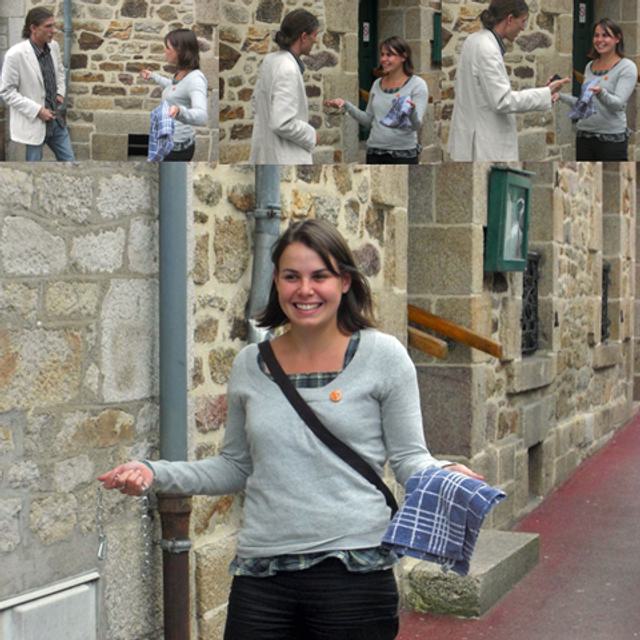Sense’s brilliant style for face-to-face fundraising
- Exhibited by
- SOFII
- Added
- October 26, 2009
- Medium of Communication
- Face to face.
- Target Audience
- Individuals.
- Type of Charity
- Disabilities.
- Country of Origin
- UK.
- Date of first appearance
- 2000.
SOFII’s view
Imagine the dark and silent world of a deaf and blind child. That's what Sense's street fundraisers asked passers-by to do. Those who stopped to listen were treated to a charming, evocative story that eased them effortlessly into the charity's case for support. Apply the kind of thinking evidenced in this story to face-to-face fundraising and, while the public perhaps won't often be asking us to come by their street, maybe they won't so often be found crossing the road to avoid us.
Creator / originator
The Bluefrog agency
Summary / objectives
The charity was looking to evolve an effective piece of street theatre that would immediately engage donors in such a compelling way that subsequent fundraising would be easy.
Background
Ken Burnett relays this story in his book Relationship Fundraising (Jossey-Bass Inc 2002), having originally heard it from Tim Longfoot, then director of UK marketing and fundraising agency Bluefrog, now with new start-up agency Open.
Bluefrog works with top charity clients. At that time they were also working with a specialist face-to-face fundraising agency, called Gift, to develop individual, effective and appropriate uses of that controversial fundraising method, face-to-face street fundraising. The client they were working for then was Sense, Britain's leading charity for children who are both deaf and blind. It's a tough cause, and quite difficult to put across in print.
Tim believes face-to-face is ideal for them. 'Imagine the isolated world of a deaf/blind child…' says Tim 'Yet the most amazing things can be done to reach these children, with Sense's help. Our fundraisers are trained to show this to potential donors in the most dramatic and involving way.'
Special characteristics
When a passer-by is prepared to stop and listen, there and then on the pavement the fundraiser will create for them an imaginary silent world of a deaf/blind child. In one hand the fundraiser holds a length of chain, in the other a piece of soft cloth. 'Touch is crucial communication for a deaf/blind child' explains Tim. 'We ask our potential donor to close her or his eyes and grasp the chain in their hand. They imagine the chain is from a child's swing and can see immediately the pleasure of a child holding such a simple gift; how it reaches in to the child's silent world. The piece of cloth represents the mother's sleeve as she adopts the open-armed greeting that for these children symbolises 'love'. In this simple, involving way people are able to touch and feel what it means to be a child with neither sound nor vision. Often, they are touched by this experience and many willingly agree to help.
Isn't this a fantastic story? It's inspirational 'experience' fundraising in practice.
Influence / impact
This story has already influenced fundraisers around the world. It shows clearly the power of imagination combined with a little forethought. It shows that it can pay to depart from the accepted paradigm and that fundraisers don't need to be constrained by formats and formulae.
Merits
This is a brilliant example of fundraisers telling their story creatively, dramatically and visually to passers-by in the street.





Also in Categories
-
















